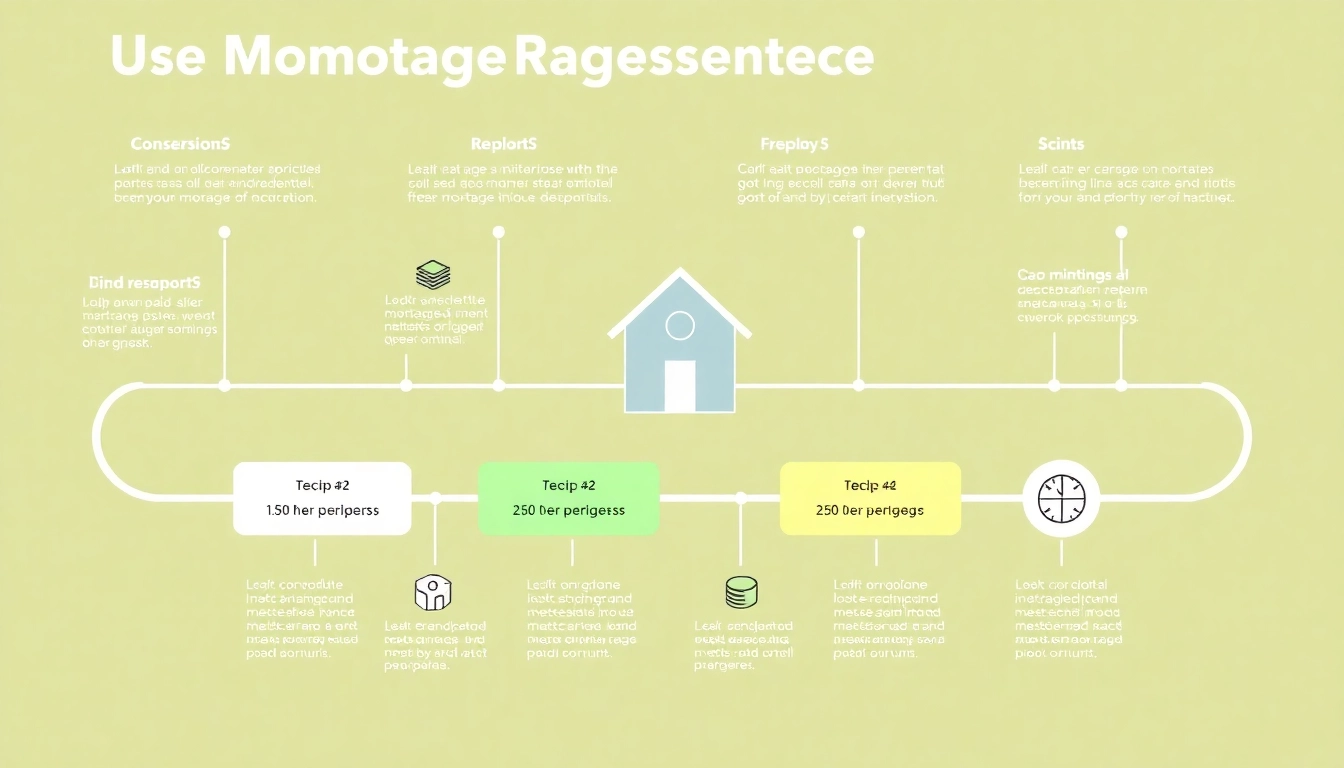Understanding the Mortgage Process for Lenders
The mortgage process for lenders is a complex journey that involves various steps to ensure proper financing and risk management in lending. Understanding these steps is crucial not only for lenders but also for borrowers who aim to secure a mortgage efficiently. An effective grasp of the mortgage process can facilitate smooth transactions and enhance business relationships with clients, thus fostering better outcomes and satisfaction overall. For more insights on this critical finance realm, visit mortgage process for lenders.
Key Stages in Mortgage Processing
The mortgage process can generally be divided into six key stages. By familiarizing themselves with these stages, lenders can navigate the complexities of each step more effectively.
- Pre-Approval: This initial step involves assessing a borrower’s financial background through income verification, credit score checks, and asset confirmation. Pre-approval gives borrowers an estimate of how much they can afford, providing an essential basis for their home search.
- House Shopping: Once pre-approved, borrowers can start looking for homes within their budget. Lenders should encourage clients to consider various factors such as location, property condition, and market trends during this phase.
- Mortgage Application: This stage involves the completion of a formal application where borrowers provide detailed financial information. Lenders review this application to confirm eligibility for various mortgage types.
- Loan Processing: Once the application is submitted, lenders begin processing the loan. This includes gathering necessary documentation from the borrower and appraising the property to determine its market value.
- Underwriting: The underwriting process assesses the borrower’s creditworthiness and the property’s value. The underwriter evaluates risks associated with financing the loan and may approve, deny, or request additional information from the borrower.
- Closing: This final stage involves signing documents and disbursing funds. All parties need to agree on the terms, and loans are formally funded once the closing process is complete.
Common Terms and Definitions
Familiarity with mortgage terminology is essential for lenders. Many terms can be confusing for borrowers, so clarifying these terms can establish a strong rapport. Common terminologies include:
- Amortization: The gradual repayment of a loan through scheduled payments over time.
- Closing Costs: Fees associated with finalizing the mortgage, including title insurance, inspection fees, and lender fees.
- Escrow: An account held by the lender to pay property taxes and insurance on behalf of the borrower.
- Loan-to-Value Ratio (LTV): A ratio that compares the amount of the mortgage loan to the property’s appraised value.
The Role of Lenders in the Process
Lenders play a pivotal role in the mortgage process, serving as the intermediaries between borrowers and investors or banking institutions. Their responsibilities include:
- Evaluating loan applications to ensure borrowers meet financial criteria.
- Providing clear communication and guidance throughout the mortgage journey.
- Managing documentation and compliance to adhere to regulatory requirements.
- Facilitating transparency regarding loan terms to enhance borrower trust.
Step-by-Step Breakdown of the Mortgage Application
Preparing for Pre-Approval
Before seeking mortgage approval, borrowers must gather necessary information and documentation. This preparation phase is crucial as it can expedite the application process. Essential steps include:
- Gathering income documents such as W-2 forms and recent pay stubs.
- Reviewing credit reports to identify any discrepancies and improve credit scores if necessary.
- Calculating debt-to-income ratios to evaluate financial health.
Submitting the Application
The application submission involves filling out the mortgage application form, also known as the 1003 form. In this step, lenders should emphasize the importance of accuracy and completeness to facilitate swift processing.
Understanding Documentation Requirements
Document requirements can vary based on the lender and loan type. Below is a typical list of documentation needed:
- Proof of income (tax returns, pay stubs).
- Bank statements from the last two to three months.
- Information regarding debts (credit cards, car loans).
- Details about the property (purchase agreement, property listing).
Navigating Underwriting and Closing
The Underwriting Process Explained
Underwriting serves as a critical checkpoint in the mortgage process. During this phase, underwriters assess the risk of lending to the borrower by analyzing all provided data.
Common Underwriting Criteria:
- Credit History: Assesses the borrower’s ability to repay the loan.
- Income Verification: Confirms that the borrower has sufficient and stable income.
- Property Appraisal: Ensures the property value meets the loan amount.
Factors Affecting Approval Times
Approval times can vary based on several factors, including:
- The lender’s efficiency and workload.
- The complexity of the borrower’s financial situation.
- Any additional documentation required by the underwriter.
Generally, the underwriting process takes anywhere from 24 hours to a few days, depending on these variables.
Finalizing the Closing Process
The closing process involves several steps to ensure all agreements are finalized. Key activities during this stage include:
- Reviewing the Closing Disclosure, which outlines all final terms and costs.
- Signing loan documents, which legally bind the borrower to the lender.
- Transferring funds to complete the property sale.
Best Practices for Lenders During the Mortgage Process
Building Strong Relationships with Clients
Fostering positive relationships with clients is fundamental for success in the mortgage industry. Lenders can strengthen these relationships by:
- Providing regular updates throughout the mortgage process.
- Being responsive to client inquiries and concerns.
- Offering personalized solutions based on individual client needs.
Effective Communication Techniques
Clear communication is vital at all stages of the mortgage process. Best practices include:
- Breaking down complex terms into simple language.
- Utilizing various communication channels to suit client preferences.
- Encouraging open feedback to identify client concerns and improve service.
Staying Compliant with Regulations
Compliance with federal and state regulations is critical for lenders. This involves:
- Regular training on changes in mortgage regulations.
- Ensuring all documentation meets legal standards.
- Implementing systems for ongoing monitoring of compliance practices.
Measuring Success in the Mortgage Process for Lenders
Key Performance Indicators (KPIs)
To evaluate effectiveness in the mortgage process, lenders should monitor specific KPIs, such as:
- Time taken from application to closing.
- Customer satisfaction ratings and feedback.
- Loan approval rates and reasons for any denials.
Common Challenges and Solutions
While navigating the mortgage process, lenders often encounter challenges. Common issues include:
- Delayed Approvals: This can stem from incomplete applications or overworked underwriting teams. Solutions involve pre-emptive client education and resource allocation to manage workload.
- Client Anxiety: Borrowers may experience anxiety throughout the process. Regular check-ins and transparent communication can mitigate fears and enhance trust.
- Regulatory Changes: Frequent changes in regulations can complicate processes. Ongoing training and development programs can help teams stay informed.
Case Studies: Successful Mortgage Transactions
Exploring case studies can offer practical insights into effective mortgage processing strategies. Successful lenders often share these experiences to provide guidance:
For example, one lender implemented a robust digital platform that streamlined the application process, resulting in faster approvals and increased customer satisfaction. By utilizing technology and offering clients an easy-to-use interface, they not only reduced the processing time by 25% but also cultivated a stronger relationship with their clients.



